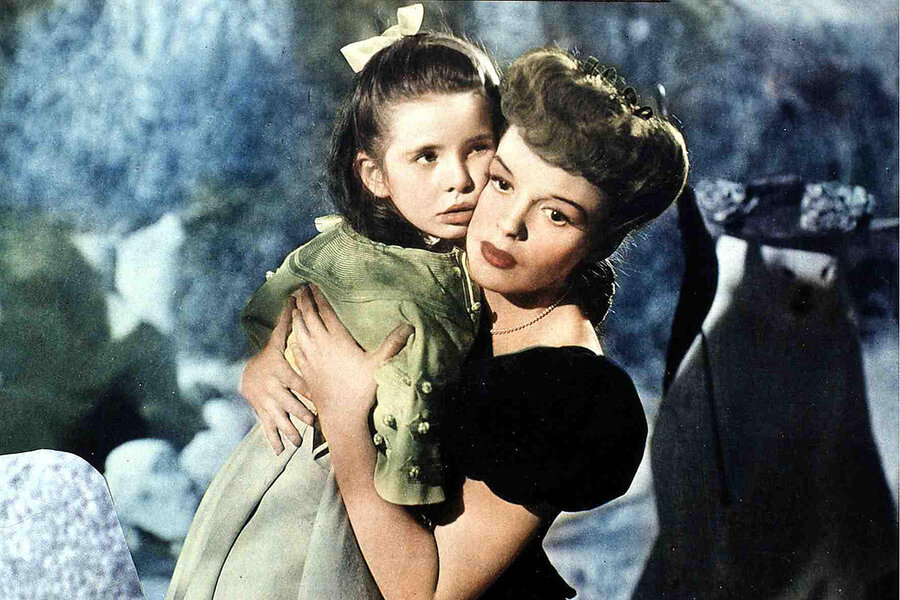Home theater: Escape into the joyous world of musicals
Loading...
If a consistent supply of joy is what you seek, no other movie genre surpasses the movie musical. Yes, I know, there are dark musicals, great ones even – like “Cabaret” and “Pennies From Heaven.” And, yes, even the frothiest musicals sometimes have sorrowful scenes. But it’s no accident that historically audiences have turned to musicals when times were especially tough. The early films of Fred Astaire and Ginger Rogers, for example, are synonymous with Depression-era escapism. Who would not want to step into such an elating realm?
The good news, of course, is that we still can. The backlog of joyous movie musicals is so vast and accessible that a single column cannot begin to suggest the riches that await you. Keep an eye on this column for more recommendations.
Editor’s note: As a public service, all our coronavirus coverage is free. No paywall.
Why We Wrote This
Audiences have often turned to musicals when times are especially tough. The early films of Fred Astaire and Ginger Rogers, for example, are synonymous with Depression-era escapism, notes film critic Peter Rainer. As he sees it, “Who would not want to step into such an elating realm?”
“Meet Me in St. Louis”
Shot in eye-popping Technicolor, Vincente Minnelli’s 1944 masterpiece “Meet Me in St. Louis,” released in the midst of World War II and starring Judy Garland, is simply one of the finest and most beloved musicals ever made. It even outgrossed “The Wizard of Oz.”
Derived from Sally Benson’s bestseller, the story is situated in St. Louis over the course of a year and is divided into four vignettes starting in the summer of 1903 and concluding in the spring of 1904. The centerpiece is the well-to-do Smith family. On the surface they appear to enjoy all the comforts of an idealized rural Americana as only Hollywood can depict. Alonzo (Leon Ames), the patriarch, has a dutiful wife, Anna (Mary Astor), a son, and four daughters, including Esther (Garland), the second oldest, and 6-year-old Tootie (the amazing Margaret O’Brien), the youngest. Esther is in love with literally the boy next door, John (Tom Drake), who is too clueless to comprehend her coy ardor. He compliments her choice of perfume, saying it’s the same his grandmother uses. Shaking hands goodnight, he says she’s “got a mighty strong grip for a girl.”
The film’s central antagonist is not a person but a city – New York, where Alonzo’s banking business is being transferred, causing much consternation and heartbreak among his brood.
O’Brien gives what may be the best performance by a child actor in Hollywood history. She’s preternaturally good, so much so that she even steals her scenes with Garland. No small feat, since Garland is close to her best here.
Especially later in her career, Garland often carried an edge of hysteria even in roles where it wasn’t required. But in this film, she’s unabashedly normal. She’s also in beautiful voice. Her rendition of the Hugh Martin-Ralph Blane “Have Yourself a Merry Little Christmas,” sung to a bereft Tootie, is one of her most soulful moments, and the songwriting team’s “The Trolley Song” – “Zing zing zing went my heartstrings!” – is among her most jubilant. I once guest-hosted a movie evening at a senior citizen’s home and when this scene came on, people who I was told rarely spoke anymore suddenly broke into song. This was incredibly moving to witness – a testament to the power of movies to uplift. (Unrated)
“Top Hat”
Of all the Astaire-Rogers movies, “Top Hat” (1935), with songs by Irving Berlin, is my favorite. (“Swing Time” is a close second.) The plot is one of those mistaken identity concoctions that never made much sense and doesn’t have to. Who needs a pretext to watch Fred and Ginger? Their number, “Isn’t This a Lovely Day,” danced in a deserted bandstand in London during a thunderstorm, is matched later on by the ineffable “Cheek to Cheek,” set in an Art Deco Venice. Fred tap-tap-tapping during “Top Hat, White Tie and Tails” is an artful explosion of the highest order. (Unrated)
“Oliver!”
“Oliver!” (1968) won a well-deserved Oscar for best picture and still holds up remarkably well. Director Carol Reed, best known for the Graham Greene scripted noir thriller “The Third Man,” had a true artist’s affinity for childhood revels and terrors, and his work with the cast, including Mark Lester as Oliver and Ron Moody as Fagin, is exemplary. Derived from the Lionel Bart stage production, it’s not just a great movie musical, it’s also one of the greatest of all Charles Dickens adaptations. (Rated G)
These films are available to rent on Amazon’s Prime Video, YouTube, Google Play, and iTunes.





